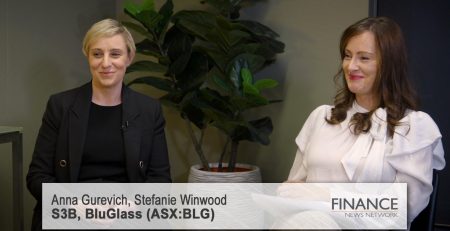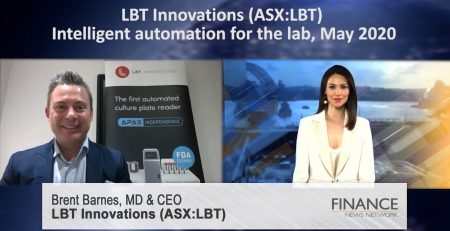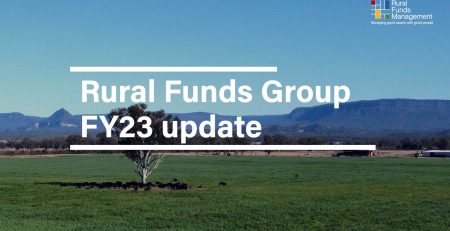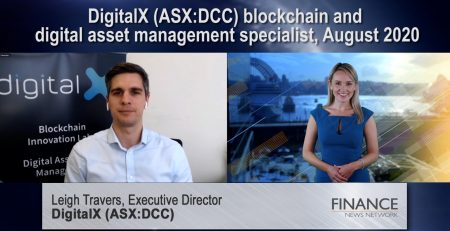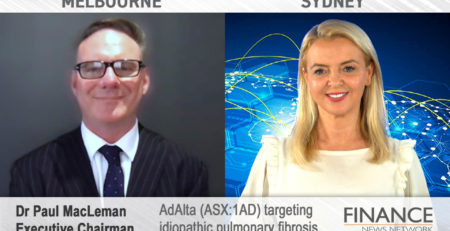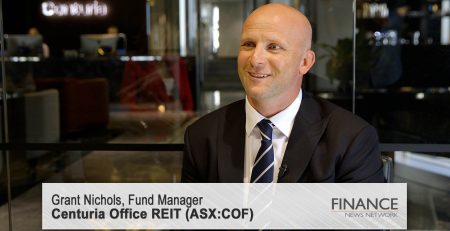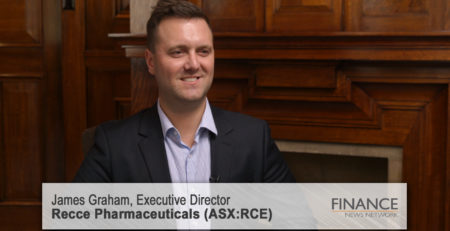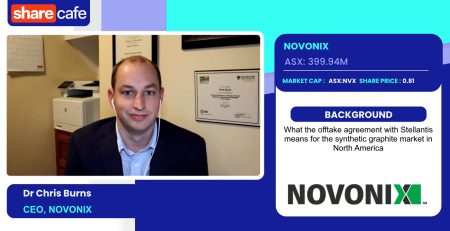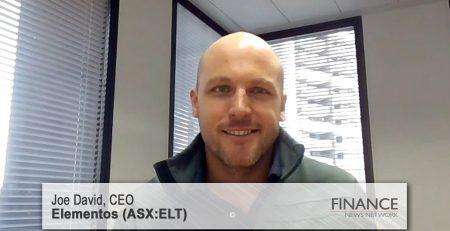Market update with Shaw and Partners, October 2023
Shaw and Partners Chief Investment Officer Martin Crabb takes a look at interest rates and what they mean for small cap investors.
Paul Sanger: First up today, as I said, we have a keynote presentation from Martin Crabb, who is the Chief Investment Officer at Shaw and Partners. Martin, welcome back, my friend.
Martin Crabb: Thanks very much, Paul, and thanks everyone for making some time to spend with us today. We've got another fantastic lineup of interesting companies to talk about. But I just thought I'd spend a few minutes just doing a bit of scene setting on where we are in investment markets. So, as Chief Investment Officer at Shaw and Partners, I'm responsible for setting the sales, if you like, in terms of investment strategy, and we advise on over $30 billion of assets. So, it's not something we take lightly. So, just talking to global investors and market participants over the past couple of weeks, it's clear there's been a shifting of the narrative from a soft landing to no landing. So, if I go back to Christmas time, most investors were saying we're going to have a hard landing this year because of the aggressive rate hikes we'd seen by central banks. And as the year’s progressed, that looks like that's a wrong call. And now people are saying that we actually might stall the economy at trend GDP growth. So, rather than going into a recession, we actually slow down to more the longer term trend in GDP, which is sort of 1 to 2 per cent in US markets and a little bit higher in Australia.
And central banks seem to be more comfortable coming to that conclusion. But what it does mean is that if we're going to slow down to trend growth, we're probably going to not get the gains on inflation we thought we were going to get. So, although it's good news for companies and earnings and so forth, it does mean that interest rates either have to stay where they are for a longer period of time or even move a little bit higher.
Now, we do have an FOMC meeting on 1 November. We have a Reserve Bank meeting on 7 November. So, we do have markets baking in the probability of one more rate hike just because the economy is stronger, and that's being held up by household spending, which I'll talk a little bit about in a minute. And that probably means… A stronger economy means less inflationary downside and means they need to stay higher for longer.
So, what that's done is pushed the entire yield curve higher. So it's not just cash rates that'll look elevated, it's two-year bonds, it's five-year bonds, it's seven-year bonds, it's 10-year bonds. And there's a lot of focus in the equity market on the 10-year bond because most capital asset pricing models are using the US 10-year bond or the Aussie 10-year bond to price the long-term cash flows from companies. So, if that keeps moving higher and higher, you're using a higher discount rate, you're getting lower value for stock. So, that does keep the market under pressure and unless a company is growing its earnings, you're going to see downside inequities when long-term bond rates go higher.
So, it all comes back to this resilience of the consumer. We've got a very strong growth in the labour market in Australia driven by immigration. Over 700,000 people have come into the country in the last 12 months, about 200,000 have left. So, we've had a half a million increase in our population, and almost all of those people have found a job. So, there's very strong income growth on the back of that. And also, people built up savings during COVID, which they're running down. Now, some of us are running them down because we've got to pay higher mortgage rates, but a lot of people are running them down by spending and going overseas and travelling and buying a new car.
So, new car sales in Australia are up 18 per cent in the past 12 months, for example. That is not a recessionary environment. So, we've got a strong consumer, which is good for some companies, but it does mean that interest rates probably stay higher for longer, not just at the short end but also at the long end.
So, we're seeing that shift higher in interest rates, and investors really need to think about what that means for their portfolio. If you're sitting in cash and cash-like investments, you're going to probably see your cash rates hold up for a while, which means that in order for you to take on risk, you need to be getting a better return. Now, the three companies we're going to hear about today have got fantastic growth stories. They're not really that worried about the level of interest rates on their valuation. It's really about can they deliver on their growth strategy?
And if a company can deliver on its growth strategy, the interest rate story is less of an issue. But if you're a Telstra (ASX:TLS) or a Woolworths (ASX:WOW) or a Commonwealth Bank (ASX:CBA), where your earnings are reasonably stable and they're certainly not growing at the sort of rates we're going to hear about today, then the valuation becomes really important.
So, what we're seeing is investors are saying, "Look, I can just sit in cash and bonds and get my 4, 5, 6 per cent. Why would I move into the equity market?" So, we have seen a derating of small cap companies because of that change in the risk profile, and that's created some fantastic valuation opportunities in the smaller end of the market. Most investors are just chasing the top 100 companies, and the gap between the valuation of the top 100 companies and the rest, if you like, has grown to probably its highest level in over two decades.
So, it's now a good time to go shopping in that smaller cap end of the market, and valuations are looking pretty attractive. If we sort of go around the world and look at different regions, the US economy and the US share market has definitely driven most of the gains that we've seen in global markets this year. And you've heard of the Magnificent Seven, no doubt — those companies that are in and around the AI theme have driven a lot of the valuation upside. If you look below that, however, where it's the Russell 2000 or the ASX All Ordinaries, and those other smaller indices of companies, there's some really good opportunities.
So, on a macro level, the market doesn't look that attractive on a valuation basis. But if you take the next tier down, the small- and mid-cap companies, we are seeing some really fantastic opportunities for investors. So, even though the bond market movement would suggest that you take a little bit more of a cautious view, we think that's more than made up for by the valuation.
So, within our portfolios that we manage here at Shaw and Partners, we've had a reasonably cautious view about the economy and particularly about consumption because we know these higher interest rates are going to bite. But, as a lot of other investors have concluded, investors are handling these higher interest rates, there's people still spending money, there's people that have got, whether they're superannuation pensions or just high net worth people who don't have a lot of debt, they're enjoying these higher rates and getting higher consumption on the back of that.
So, we've moved from a very cautious view or a relatively cautious view on markets to being fully invested. So, we're saying to our clients, "Look, whatever your long-term investment policy is that you've agreed with your advisor, that should probably be where you're positioned at the moment.”
We're not taking a big view either way on bonds or equities. We're saying you should be relatively balanced and certainly diversified across countries, industries, and looking at some of those small cap opportunities to add a bit of value for your portfolio.
So, we've shifted from a cautious to a neutral stance. Obviously, the next leg of that would be “When do you start getting a bit more positive about equities?” And that probably does require a shift in sentiment by one of the central banks, whether that's the federal or Reserve Bank, to say definitively that we've done enough to slow down the economy and we can now start normalising interest rates back the other way. That's probably the signal to move a bit more aggressively.
So, key messages here, be fully invested and look in the small- and mid-cap area of the market for opportunities for your portfolio. And with that, I'll hand back to Paul.
Paul Sanger: Thanks Martin. And just a couple of questions from myself. In the room beforehand, we were just talking about that divergence, large caps versus small caps. The last time it had been this wide was back in 2003. But you also noted then that in 2004, small caps outperformed the large caps. So, hopefully we're on that trajectory over the coming months, yeah?
Martin Crabb: Yeah. Well, let's hope that's the case. As you said, when these things get out of whack too far, they what we call mean revert. So the PEs of large and small cap companies should probably trade relatively close to each other. Arguably, small caps grow faster, so they should get a bit more of a premium, but over time they're probably going to come back together. So, when they diverge like this, it does create an opportunity. And as you said, Paul, the last time we got a divergence this big, small cap investors did very, very well over the proceeding period. So, that's another good reason to look at the space.
Paul Sanger: Martin, always appreciate your time and your views. You have a great weekend.
Martin Crabb: Thank you.
Ends
Copyright 2023 – Finance News Network
Source: Finance News Network


